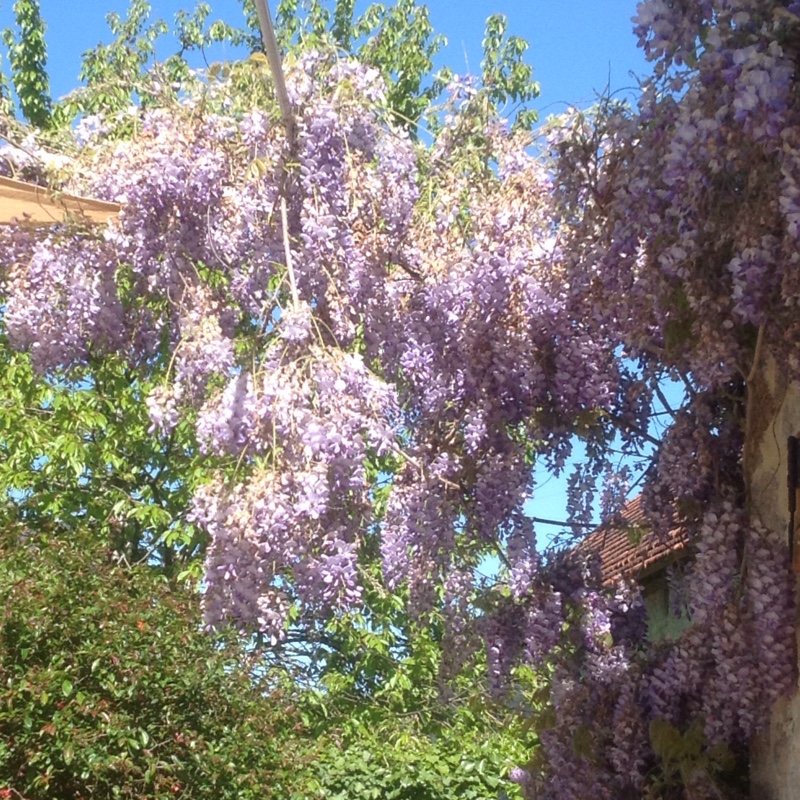
Wisteria floribunda
Japanese Wisteria
Japanese wisteria has lovely foliage and flowers that bloom in early summer with fragrant trailing flowers up to 20 inches long in tones of white, blue, pink and lilac. It is a vigorous grower often followed by poisonous seed in green pods. Ideal for a house wall that gets full sun or partial shade or up a pergola. This wisteria grows fast and will need cutting back at least twice and year to keep it in check. Leaves appear at the same time as the flowers. Another way of identifying the difference between Chinese and Japanese Wisteria is that the Chinese varieties twine clockwise and the Japanese anti-clockwise.
Contributed by @junebensted
-
Full sun to partial shade
-
Occasional watering
-
Full Frost Hardy: 5F (-15°C)
-
Moist and free draining
Common name
Japanese Wisteria
Latin name
Wisteria floribunda
type
Flowering climber
family
Fabaceae
ph
6.0 - 7.0 Acid - Neutral
Plant & bloom calendar
-
Best time to plant
-
When the plant will bloom
full grown dimensions
 7.00 M
12.00 M
7.00 M
12.00 M
Wisteria floribunda
Japanese wisteria has lovely foliage and flowers that bloom in early summer with fragrant trailing flowers up to 20 inches long in tones of white, blue, pink and lilac. It is a vigorous grower often followed by poisonous seed in green pods. Ideal for a house wall that gets full sun or partial shade or up a pergola. This wisteria grows fast and will need cutting back at least twice and year to keep it in check. Leaves appear at the same time as the flowers. Another way of identifying the difference between Chinese and Japanese Wisteria is that the Chinese varieties twine clockwise and the Japanese anti-clockwise.
Flowering Season
From Late Spring TO Early Summer
Blue / Lilac scented flowers come out in late Spring and early Summer, usually followed by green seed pods.
Planting Season
From Mid Spring TO Late Spring
Plant out pot grown plants in a sheltered, sunny site. They need support.
Propagation by Softwood Cuttings
From Mid Spring TO Early Summer
Take soft wood cuttings in spring to early summer. Cleanly cut up to a 10cm long stems, remove lower leaves and pinch the tip out, dip the stem into rooting hormone, fill a container/pot with suitable compost, make holes around the edge of it and plant the cuttings, water in well, cover with a polythene bag and place somewhere warm, lake the bag off twice a week to air the cuttings. Keep the cuttings moist until well rooted.Harden off when well rooted and pot on into individual pots increasing the airing to let the leaves to develop. Remove rotten, dying or dead cuttings regularly.
Propagation by Hardwood Cuttings
From Mid Autumn TO Late Winter
Take hardwood cuttings of up to .3m from this years growth, making a clean from above a shoot and remove any soft growth. Nearly fill a container with fine grit at the bottom, to enable free draining, and a suitable compost. Place the cutting, having dipped he end in a rooting compound first, with a third of the cutting showing.
Propagation by Layering
From Early Summer TO Early Summer
Propagation can be done by layering, choose soft pliable stems that will reach the ground and allow the end of the shoot to be about a 1ft above the ground. On either side of a leaf joint, carefully slice the bark along it before securing it into the ground with wire hooks or similar each side of the slice. a hormone rooting powder can be used to help with the rooting. Tie the end of the shoot up carefully so that it grows vertically.



























